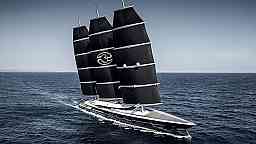Welcome guys, gals, and gender non-binary pals, to Ask 411 . . . the last surviving weekly column on 411 Wrestling.
I am your party host, Ryan Byers, and I am here to answer some of your burning inquiries about professional wrestling. If you have one of those queries searing a hole in your brain, feel free to send it along to me at [email protected]. Don’t be shy about shooting those over – the more, the merrier.
Hey, ya wanna banner?

Matt B. is back from the dead:
Here’s a fantasy booking scenario I thought of today. Really put yourself in the shoes of 1997 WCW creative team obviously without the benefit of hindsight.
If you’re the booker and Undertaker had jumped to WCW in 1997 (i.e. After NWO was up and running). Would he come in as regular named Mark Calloway like Hall and Nash or would you give him a character? What storylines could you see him having?
In 2001 after WCW is brought by WWF do you bring back the Undertaker character, and how do you switch Mark Calloway to being Taker after four years in WCW? I’m guessing it involves a coffin and being set on fire :-).
I think that the first part of the question is actually pretty easy. I would absolutely bring the Undertaker into WCW as Mark Calloway, or at the very least have him revert to his prior ring name of Mark Callous if he didn’t want to use his real name.
As Eric Bischoff highlighted during Netflix’s Mr. McMahon documentary, during the nWo era, WCW’s entire approach was making their storylines more mature and reality-based than what the WWF was doing. Bring in the Undertaker for a semi-shoot promo, have him disavow the goofy, cartoony bullshit that the Fed was having him do in the prior couple of years, and you’ve perfectly played into WCW’s more adult tone at the time. After all, if we’re talking about 1997, we’re just three years removed from Taker “dying” at the Royal Rumble and the Undertaker vs. Undertaker match at Summerslam, which were almost universally hated. The WCW fanbase would have been ready to lap up Calloway burying that malarkey.
With that said, I think you would have to position Mean Mark as a babyface. The nWo was supposed to have been the WWF incarnate, so if you’re going to have Calloway rail against the character he portrayed in the Fed, he almost has to be an opponent of Hall, Nash, and Hogan. Plus, to play off of history even more, you could bring up the fact that he was one of very few men to ever defeat the Hulkster for a world championship.
Calloway versus Hogan would have to happen at some point. Perhaps Calloway and Sting versus the Outsiders as a marquee tag match on a show where Hogan was occupied with Roddy Piper or somebody similar. Also, we could correct the historical wrong of there never being a major Randy Savage/Undertaker singles match.
As far as a return to the Undertaker character in the WWF is concerned . . . I probably wouldn’t do it. I’ve been on record in this column before saying that I never cared for the supernatural elements of that gimmick. If I were in control of booking, they never would have happened, and I certainly wouldn’t be going back to them after they went away. If I were in charge of a post-WCW Undertaker coming back to McMahonland, he’d probably be something like the American Badass or at least a character with a Gothic look but none of the magical powers.
The first person to program him with would probably be the Rock, given that would be a fresh, exciting match in light of the fact that Taker being gone from the Fed from 1997 through 2001 would mean that he missed virtually all of Rocky’s ascendancy.
Sometimes I’m not sure where Tyler from Winnipeg comes up with these:
Any chance Dan Spivey get in the Wrestling Observer Newsletter Hall of Fame?
No.
In order to be inducted into the WON Hall of Fame, you first have to be placed on the ballot, and then you have to be voted in by 60% of a pool of voters who follow wrestling in the geographic area that the candidate is primarily associated with. The pool of voters consists of past and present wrestlers, journalists, and wrestling historians. The voters are told to consider historical significance, drawing power, and in-ring ability, and preferably a candidate should be strong in two out of three of those areas unless they are a generational sort of talent in just one of the categories.
With all due respect to Spivey, who had a pretty solid career in wrestling, I don’t think he’s strong enough in any one of those three areas (let alone multiple) to even get put on the ballot, let alone be voted in if he were to be on the ballot. He was a good enough utility player – and wrestling needs utility players – but he was not an excellent in-ring talent, he was never a main event draw, and in terms of historical significance he’s basically a footnote.
Again, that’s not anything against the guy, but when you’re talking about a HOF you’re talking about the elite, and I don’t know how Spivey enters that conversation.
Things are hard for Night Wolf the Wise:
There have been stiff matches in the history of wrestling. What would you consider to be the stiffest match in wrestling history?
February 10, 1990.
New Japan Pro Wrestling.
Vader.
Stan Hansen.
In addition to these two just beating the shit out of each other generally, Hansen hits Vader so hard at one point that it literally pops Vader’s eye out of the socket. Oh, and Vader just pushes it right back in and keeps fighting.
I don’t know how you beat that.
Bryan is locked on:
Kurt Angle debuted in the WWF in 1999 around the same time Ken Shamrock left. If he stayed do you think one of them would have to lose the ankle lock submission hold?
You think they could have drawn money with the “who is the true master of the ankle lock submission?” Like the way Hercules and Billy Jack Hayes had their “master of the full nelson” feuds.
How good do you think their matches would have been? Angle was a rookie, but a UFC fighter and Olympic gold medalist would have an aura of realism. What says you?
I think that if Angle and Shamrock had any sort of significant overlap in the WWF, Angle never would have been given the ankle lock as a finisher in the first place. Though I’ve never heard this articulated, I strongly suspect that the whole reason Angle was given the hold was because of the World’s Most Dangerous Man. Due to Shamrock having recently been in the promotion, the move was over with fans and they associated it with wrestlers who had shoot backgrounds. As a result, it makes sense to have our Olympic Hero begin using it rather than having him get a whole new submission over from the ground up. It’s likely the same reason that Triple H and Shawn Michaels both started using the Crippler Crossface once Chris Benoit was no longer around. Fans already bought the move as a legit finisher, so why let that go to waste?
I would have been interested to see matches between the two men. Later in his career, Angle had some excellent bouts against the likes of Samoa Joe which incorporated elements of MMA. it would not have been exactly the same because MMA in that form didn’t quite exist when we would’ve been seeing Angle/Shamrock matches, but Ken had already wrestled some shoot style matches in the Japanese UWF at that point and likely could have walked Angle through something, even though he was a relative rookie.
Patrick is howling at the moon:
I’ve been a fan of old WWF/WWE wrestling since i was a kid back in 1986, and the old Wrestling Challenge show is what got me into the WWF/WWE right before Wrestlemania III.
Whatever happened to Moondog Spot? He still alive these days and retired or whatever?
Okay, let’s try to not turn this into another John Tolos question.
Moondog Spot was Larry Latham, a wrestler originally from Louisiana who debuted in in 1977 and quickly rose to prominence in the late 1970s and early 1980s as one-half of a tag team called the Blonde Bombers with his partner Wayne Ferris, who would later go on to become the Honky Tonk Man. The wrestled in several southern territories and in Billy Corgan’s favorite year of 1979 participated in a famous match known as the Tupelo Concession Stand Brawl. In that battle, the Bombers along with their opponents, Bill Dundee & Jerry Lawler, brawled in the concession stand at a venue in Tupelo, Mississippi.
So maybe “Tupelo Concession Stand Brawl” wasn’t the most creative name. In any event, the wild match is often credited with helping to plant the seeds for what would eventually be called hardcore wrestling.
Meanwhile, in late 1980, Michigan wrestler Randy Colley and Canadian “Sailor” Ed White formed a tag team in the WWF, called the Moondogs. Colley became Moondog Rex and White became Moondog King. The duo defeated Rick Martel and Tony Garea for the WWF Tag Team Titles on March 17, 1981, but in May of that year White was not allowed to cross the border from his native Canada back into the United States, in part because he was carrying drugs and in part because it was discovered that he did not have a valid work visa for the U.S.
The WWF was down a Moondog, so they hired Latham and stuck him into the team as Moondog Spot, immediately making him one half of their Tag Champions.
In July, Garea and Martel took that belts back from the Moondogs, who left the territory shortly thereafter. Even though they were a WWF creation, Spot and Rex remained a team and kept using the gimmick bouncing around other territories for two years before winding up back in the Fed in 1984. However, after only a couple of months, Rex left the promotion.
This lead to Spot continuing as a singles act. He had a decent amount longevity in the company, remaining through March of 1987. However, he never really accomplished much, just being a notch or two above an enhancement talent.
When Spot left the WWF, he primarily worked in Tennessee, wrestling for a variety of different smaller promotions that existed over the years in the state following the WWF’s national expansion. He also had two notable international tours. First, he spent basically the whole month of October 1987 competing in All Japan Pro Wrestling, forming a team with another Tennessee wrestler who adopted the name Moondog Spike. Second, in August and September of 1991, Spot and Spike went south of the border to Mexico’s CMLL promotion, where they wrestled not as the Moondogs but instead as a team known as Los Canibales.
Despite these foreign excursions, it was really Tennessee that served as Spot’s home base, and he was joined by several other Moondogs there over the years. In addition to Spike, we also saw Spot reunite with Rex, and there was yet another Moondog known as Cujo, portrayed by the wrestler who had previously been Hillbilly Jim’s Cousin Junior in the WWF. There was even a Moondog Splat, which is a particularly weird name.
And this is where things take a sad turn. Not only did Moondog Spot pass away, but he has the unfortunate distinction of being one of the handful of wrestlers to die in the ring. On November 29, 2003, Memphis Wrestling was promoting a show called “A Night Fit for a King,” which was meant to celebrate Jerry Lawler’s 54th birthday.
One of the matches on the show was a “Concession Stand Tag Team Battle Royale,” which hearkened back to the Tupelo Concession Stand Brawl that involved Larry Latham almost 25 years earlier. In this four-way match, Spot teamed with Poppy Love to take on Alan Steel & Mike Money, Dustin & Scott Starr, and the Rock n’ Roll Express. During the bout, a heart attack brought on the end of Moondog Spot. He was 51 years old.
Dylan stands up for WWE:
I saw a comment recently (possibly in your column) that more people watched WWE during the Attitude Era than in any other period before or since. And that would seem to be fairly widely held conventional wisdom. In terms of TV ratings that would seem to obviously be true. However in terms of global audience reach and the increased population of the USA and the world since the late 1990s, do you think that this claim is true? I guess it might depend on how you define “watching WWE”. If you include social media views, then presumably far more people watch some form of WWE content on a weekly basis than they did during the Attitude Era.
Unfortunately, I don’t know if we’ll ever know the answer to this question.
That’s because of the nature of YouTube and other social media viewership. It is true that the most-watched WWE matches on YouTube each have over a hundred million views. There is also content being put on the promotion’s other social media platforms and the company website.
However, there are very real questions about how many of those are unique views, and frankly how many of them are even real people. If there are 100 million views on a YouTube video, do we really know how many of them are individual viewers and how many are replays by the same viewer – particularly when the video has been online for numerous years? Also, there are entities that use bots to artificially inflate view counts on videos, and we don’t know whether that may be occurring with WWE content.
Charles from Rochester is taking us to Tinseltown:
Does Roddy Piper have a bigger acting career if he was predominantly a face and not a heel?
How much cross promotion was there going on, particularly with They Live since it was his largest role? Then with his smaller budget, schlocky roles?
Was there any known animosity between him and Hogan due to Piper getting a starring breakout role while Hogan’s films were (acknowledging They Live was still a B Movie), in lower budget, campy movies?
I can’t imagine that Piper would have done better in Hollywood if he was a face rather than a heel. Yes, if you think of the best runs of his career, he was a heel in almost all of them, but the reality is that he had been a face for a couple of years when he left to go make movies, so I suspect that is how the majority of fans were thinking of him when they decided whether to go support his films. Also, though it’s been many, many years, I was not able to find any record of his films being promoted on WWF television, though it’s such a natural fit I have a hard time believing that there wasn’t at least something for one picture – though the man himself was not appearing for the Fed at the time.
I’m also not aware of any animosity between Hogan and Piper on this issue. The reality of the situation is that Piper wasn’t that much bigger of a movie star than the Hulkster. Admittedly, They Live was much more significant box office than anything Hogan ever starred in and has an enduring cult following, but beyond that Rowdy Roddy’s filmography looks a lot like that of his famous rival . . . unless you think that Piper’s turn as the Dumbledore stand-in in the Harry Potter ripoff Billy Owens and the Secret of the Runes was high cinema.
We’ll return in seven-ish days, and, as always, you can contribute your questions by emailing [email protected]. You can also leave questions in the comments below, but please note that I do not monitor the comments as closely as I do the email account, so emailing is the better way to get things answered.























